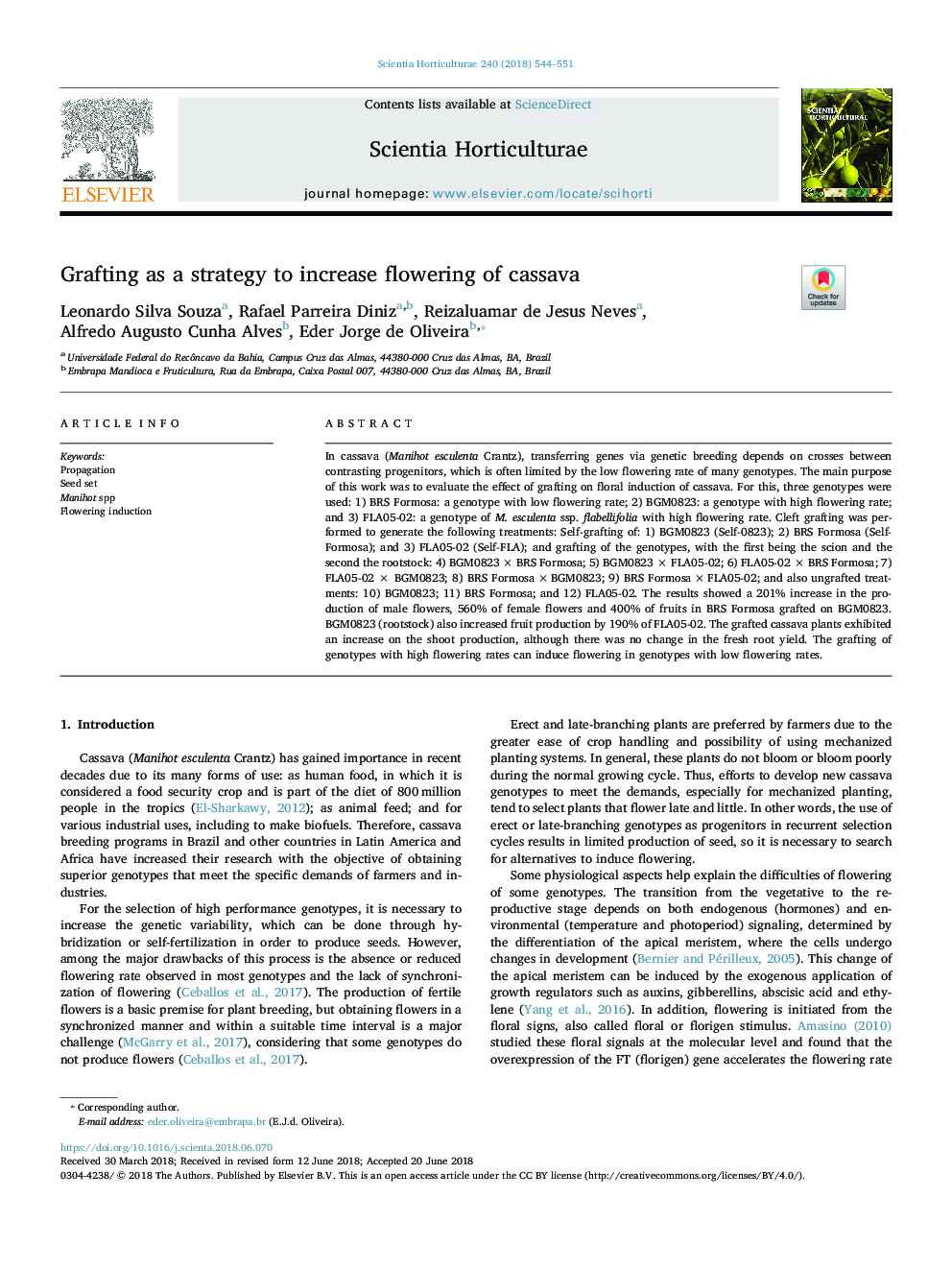| کد مقاله | کد نشریه | سال انتشار | مقاله انگلیسی | نسخه تمام متن |
|---|---|---|---|---|
| 8892430 | 1628758 | 2018 | 8 صفحه PDF | دانلود رایگان |
عنوان انگلیسی مقاله ISI
Grafting as a strategy to increase flowering of cassava
ترجمه فارسی عنوان
پیوند به عنوان یک استراتژی برای افزایش گلدهی
دانلود مقاله + سفارش ترجمه
دانلود مقاله ISI انگلیسی
رایگان برای ایرانیان
کلمات کلیدی
موضوعات مرتبط
علوم زیستی و بیوفناوری
علوم کشاورزی و بیولوژیک
دانش باغداری
چکیده انگلیسی
In cassava (Manihot esculenta Crantz), transferring genes via genetic breeding depends on crosses between contrasting progenitors, which is often limited by the low flowering rate of many genotypes. The main purpose of this work was to evaluate the effect of grafting on floral induction of cassava. For this, three genotypes were used: 1) BRS Formosa: a genotype with low flowering rate; 2) BGM0823: a genotype with high flowering rate; and 3) FLA05-02: a genotype of M. esculenta ssp. flabellifolia with high flowering rate. Cleft grafting was performed to generate the following treatments: Self-grafting of: 1) BGM0823 (Self-0823); 2) BRS Formosa (Self-Formosa); and 3) FLA05-02 (Self-FLA); and grafting of the genotypes, with the first being the scion and the second the rootstock: 4) BGM0823â¯Ãâ¯BRS Formosa; 5) BGM0823 à FLA05-02; 6) FLA05-02 à BRS Formosa; 7) FLA05-02 à BGM0823; 8) BRS Formosaâ¯Ãâ¯BGM0823; 9) BRS Formosaâ¯Ãâ¯FLA05-02; and also ungrafted treatments: 10) BGM0823; 11) BRS Formosa; and 12) FLA05-02. The results showed a 201% increase in the production of male flowers, 560% of female flowers and 400% of fruits in BRS Formosa grafted on BGM0823. BGM0823 (rootstock) also increased fruit production by 190% of FLA05-02. The grafted cassava plants exhibited an increase on the shoot production, although there was no change in the fresh root yield. The grafting of genotypes with high flowering rates can induce flowering in genotypes with low flowering rates.
ناشر
Database: Elsevier - ScienceDirect (ساینس دایرکت)
Journal: Scientia Horticulturae - Volume 240, 20 October 2018, Pages 544-551
Journal: Scientia Horticulturae - Volume 240, 20 October 2018, Pages 544-551
نویسندگان
Leonardo Silva Souza, Rafael Parreira Diniz, Reizaluamar de Jesus Neves, Alfredo Augusto Cunha Alves, Eder Jorge de Oliveira,
